Description
About This Video
Transcript
Read Full Transcript
Hi, welcome back. For this practice, we will be playing with some arm balancing. We'll be playing with bhakasana, sometimes called crow, sometimes called crane. And the idea that we will be working with here as we go deep into the core, as we go deep into the upper back, is to create a little space, to create room for the possibility of play, the possibility of surrender. And we'll let our own internal process guide us to that place. It will be useful, helpful if you have one blanket and two blocks for this practice. And in fact, it will make lots of sense if you take those two blocks and place them at the top of your mat as you begin so that you're not reaching for them from the splits later. Just kidding, sort of. So blocks to the top of the mat and we'll find our way into table. And really take your time to find your way into this all four shape. Like move around until you feel stable in this moment, whether this is the first time or the 10,000th time you've been in this shape. And it can be useful and helpful just to look down at where things are, where your hands are, where your knees are. And what we'll be doing is we're taking these two shapes that you might have done before, cat and cow, and we're sort of inviting them into the upper back while we keep the low back and the pelvis stable. So some of you might like to place a block between the thighs to help with this stability. It's not necessary. Some of you may like to tuck the toes under to keep some of this stability in the low back through the pelvis. And as you breathe in, allow your heart to just sag below the grade of the shoulders. And as you breathe out, press the palms into the floor and invite the back of the heart to float up. And we'll let this happen a handful of times just at the pace of your own breath, asking first that question, how do I do it?
And staying there as long as it takes. Like, you know, that could be a decade's worth of work. And following that into the land of what do I feel? Where do I feel? Don't be afraid to try something that you've never done before. And so with the next breath out, we'll come back to a neutral spine. We'll remove the block from between the thighs if you've placed it there and bring it to the top of the mat. And from here, just let yourself have some really cathartic, normal cats and cows happen. Breathing in, letting the heart drop down, the tailbone point up, maybe looking up. And as you breathe out, pressing the palms into the floor, rounding the back, you might add some forward to back movement there. You might let your elbows sort of steer the movements. What do you feel? And on a breath in, this time we'll breathe into table, all fours. And as you breathe out, tuck the toes under, move the hips toward the heels, press the palms of the hands into the floor, lift the knees away from the floor, straighten the legs into downward facing dog. And you might let some movements happen here. Some things might bend, some things might shift. You might sort of feel around for the edges of the container that we call downward facing dog. Breathing into the fullness of the back of the body and breathing out into the softness of the belly. And with an inhalation, let's bend the knees a bit and we'll step the right foot forward between the hands. And this is a nice place to elevate the hands onto the blocks so that we have lots of room for all of our parts. And let it be a really exploratory lunge, other than organizing the body so that your right knee is right over top of the ankle, like really and truly here the world is your oyster. Move around, wiggle around, shift around, explore it. If there's a way you've always wanted to move here, then move in that way. And then we'll switch the legs and for some of us it will be fun to press the hands into the blocks and do a little kick switch. That's not necessary though. You could step back to down dog or you could step forward to uttanasana. And again on the left side, like let some movements happen. Feel your weight into it. Let the natural and elegant length of your spine reveal itself. And with a breath out, we'll bend that right knee and we'll step the right foot forward to meet the left uttanasana standing forward fold. Invite the crown of the head to be heavy here and the back of the skull to be soft. You'll notice my hands are on the blocks and you can feel free to place your hands on your blocks or even on the thighs. You can bend the knees a little or a lot. Just whatever it takes to feel this sense of release through the back of the neck. Notice I did not say that the goal here is to reach the floor. I can almost guarantee that touching the floor will not make you a better person necessarily. Soften from the shoulders to the earlobes. Bend the knees a bit and with a breath and press the feet into the floor with purpose and we'll start to roll all the way up to stand. You might even keep this action going by sweeping the arms, hands and fingers to the sky. And as you breathe out, bring everything back to the heart and pause and notice what you feel. And so we'll take one of the blocks and we'll place it between the thighs. And now is not the time for your Thymaster death grip. Now is the time just to make contact. So there's a little bit of space there and you might even experiment with how much is necessary actually to hold this block in place. Less than you think. And once you are there, let there be a sensibility of being ready for an earthquake, if that makes sense. A little bit of softness everywhere. Feet are connecting with the floor. Knees are soft. Tailbone is attentive to the gravity that's already happening. The belly moves maybe a millimeter closer to the spine and the heart blooms. And with a breath in, we'll sweep the arms, hands and fingers toward the sky. And as you breathe out, turn the palms to face the front of your mat and bend at the elbows to cactus arms or goalpost arms. And we'll do that a couple of times. Breathing in, extending and breathing out, bending. And again, be with your process. What does it require to make these movements? And then what do you feel? Where do you feel? And the next time or two that you're exhaling into that goalpost arm shape, cactus arm shape, we'll pause there, we'll linger there, and we'll allow for ease. So you might be feeling strain through the shoulders or strain somewhere else. Invite ease. Doesn't mean it's easy.
And so as you breathe in, you might silently repeat this word, ease to yourself. And as you breathe out, allow your body to feel ease. And you might even invite the hands to communicate a shape of ease. And with your next breath in, we'll reach toward the sky. And as you breathe out, dive forward, Uttanasana, standing forward fold, release the block from between the legs, bring the hands to the blocks. And with your awareness at the belly button, as you breathe in, lengthen the spine, lift the chest, shift your gaze forward. And as you breathe out, fold forward. And we'll do this a couple of times. Awareness at the belly. Notice what's happening. With your next breath out, we'll just linger in Uttanasana for a breath. Take hold of the blocks. And as you breathe in, we'll step the right foot back. And using the blocks, we'll sort of angle the right toes out slightly, lower the heel to the floor, and we'll rise all the way up to stand in preparation for warrior one. So you might bring the hands to the hips and generally organize the body or orient the body so that the belly button and the points of the hips are facing the front of the mat. Deep press into the earth purposefully, ease permeates all of it. So we'll breathe in and sweep the arms, hands and fingers to the sky. And as you breathe out, start to bend the left knee and bend the arms at the elbows. And we might do that maybe three times. And on the third or so breath, we'll linger in the shape, inviting your right glutes to engage to support the body, inviting the tailbone to be more sensitive to gravity as the belly moves closer to the spine and the heart blooms. And on a breath in, we'll start to close this book of the arms. I don't know why I always think about Game of Thrones when I'm doing this, makes no sense. And we'll take the right elbow and nestle it, nestle it into the crook of the left arm, maybe the backs of the hands touch, maybe the palms touch. Hands move a teeny bit away from the face, elbows lift away from the chest, shoulders soften. Ease, ease, ease in there. And so we'll release this with a cathartic exhalation. You might take a deep breath in and let it go. Shake it out, shake it off. With a breath in, we'll bring the hands to the top of the left thigh. Rotate onto the ball of the right foot. Breathe in, sweep the arms, hands and fingers to the sky, bending the right knee as you breathe out. Slowly shift toward warrior three, Virabhadrasana three. Remember ease, softness at the skin. Ease in the well of the right hip. As you breathe out, we'll come back to the lunge.
We'll breathe in, reach forward and down. And we'll breathe out and step back to downward facing dog, Adho Mukashvanasana. And again, like really feel free to get out there with your exploration of down dog. And with a breath in, we'll bend the knees a bit, shift the gaze forward, we'll step the right foot forward. And again, it might be useful to have the hands on the blocks just to get organized here. Scoot the left foot forward, lower the heel to the floor, press the heel into the floor, rise up to stand, organize the belly, organize the pelvis. Breathing in, sweep the arms, hands and fingers to the sky. Breathe out, bend the right knee, soften at the shoulders as you bend the elbows. And we'll let that happen a couple of times. How do I do it? What do I feel? What happens if? And next time we'll linger in the shape, feel that the contact that the left foot is making with the floor, tailbone is heavy, belly is engaged, heart is light. Breathing in, we close the book and we maybe rest the left elbow in the crook of the right arm. Perhaps the backs touch, perhaps the palms touch. Feeling around for this sense of internal alignment. And we'll let it go with a breath in or with a breath out. So deep breath in. That was very like show choir, wasn't it? Jazz hands. Breathing in, we'll bring the hands to the top of the right thigh, turn onto the ball of the left foot, bend the knee. Breathing in, circle sweep the arms around and up. And as you breathe out, we'll start to shift our weight into the right foot. Go slowly. It's harder, but it's so much more interesting. Soft shoulders, soft face, soft hip, engaged booty. Yes, I'm grabbing my own butt. You should too. Every day. And from here, as you breathe out, come back to the lunge. We'll breathe in, reach forward and down and as you breathe out, step the left foot forward to meet the right uttanasana. And we'll start to shift toward a squat malasana. From uttanasana, from this shape, we'll start to shift toward malasana. So you could either keep the hands on the blocks or bring the hands to the floor, whichever makes the most sense. For ease, shift the weight into the balls of the feet as you start to bend the knees and lower the tush toward the floor. And as far as alignment goes here, knees and toes face the same direction. So that means if the knees are facing straight ahead, so are the toes. And you've got a lot of room here to bring the upper body to the inner edges of the knees. And notice my heels are lifted. Yours can be too. If your heels go all the way to the floor with ease, then do that. It's not necessary. Let the forehead become heavy and the spine round. Let the tailbone become heavy. Start to map the topography of the back of your body. Notice where you feel things pulling, which direction they're pulling. From here, we'll press the hands into the floor and start to round the spine. Just let there be this nice round. Your arms might straighten. Let the tailbone be heavy and start to shift the gaze forward on the floor. Notice what you feel. So come on back out of there. And we'll take this just a little bit deeper. And when I say that, things might start to get more complicated from an architecture perspective. But all of what we've been talking about as far as ease and space, all of that is still happening. All of that is still our true north for the practice. So we'll start by coming to Uttanasana. And I like to angle my heels in and my toes out. It's not necessary. And we'll start to bend the knees enough so that the palms of the hands can make contact with the floor. And mine are about as wide as the shoulders, the tops of the shoulders. But do what feels the most stable for you. And from here, press the palms into the floor around the spine, just as you did in that cat, letting the tailbone be heavier. Shift the gaze forward. This is the pose. Now from here, some of you might be interested to start to squeeze. This time, you really can break out the Thymaster. Squeeze. Squeeze the upper arms. Shift the weight into the hands. Press the palms into the floor, around the spine, gazing forward, and then try just one foot away from the floor. And then try the other foot away from the floor. Allow for ease. Come on back out. Move it around. You've been there. You've done it. The pressure's off. The feet do not ever need to leave the floor.
Everything that we're doing from here on out is that space for play, for Leela. Space, for serendipity. So again, hands into the floor, booty lifts. Squeeze. Squeeze the beach wall. Shift the weight into the hands, gazing forward, rounded spine, one foot, maybe a second foot. Breathe. Ease. Liberation. Lower down. And then I find it useful every time that we move into new territory, anytime we move into any territory, really, to like pause and notice what you feel. Where is sensation strong in the body? What emotions are coming up? Notice all of that. Notice your response. So close the eyes for just a minute. Notice the vibrancy of your own form. And from here, we'll come down onto the floor. So we'll take our blanket, rolled like a snail shell, placed pretty close to the top of your mat. And we'll turn around so that it's facing your backside. And we'll recline over the blanket, top of the blanket, right underneath the armpits, lying all the way down, extending the arms, and getting heavy. And while you're in the shape, while you're attentive to the gravity that's already happening, notice where in the body your awareness concentrates. Where you're drawn. And go there. Be there completely. Start to bend the knees, slowly bringing the soles of the feet to the floor, bringing the soles of the feet then together, externally rotating the hips, bringing the legs into Supta Baddha Konasana. And can you rest in the well of the hips? And from here, we'll roll all the way over to one side, just as if you were rolling over in your bed, if you do that kind of thing. We'll slide the blanket out of the way, and let's come all the way down. And we're locating a place of rest, a place for integration, which could be on the back, or the side, or the belly. Let every bit of you settle into your bones. Let the bones settle into the earth, and invite your awareness to float up to the surface of your skin. And listen deeply to the sounds of life. And stay here as long as you like. If you're ready to come out, you might begin just by making the tiniest of movements, pulsations of movements, letting those spread across the body. And then rolling to your favorite side, and pausing, noticing this is a potent place for messages to be sent and received. Just listen. And when the time is right, slowly make your way out of that shape. And your hands might find your heart in a shape or mudra or gesture that feels meaningful, doesn't have to be anything official. And the weight of the hands at the heart communicates something. Be there to receive it. Thank you, sweet beloved, for sharing this space, and your practice, and yourself. Peace.
Practical Magic
Comments
You need to be a subscriber to post a comment.
Please Log In or Create an Account to start your free trial.
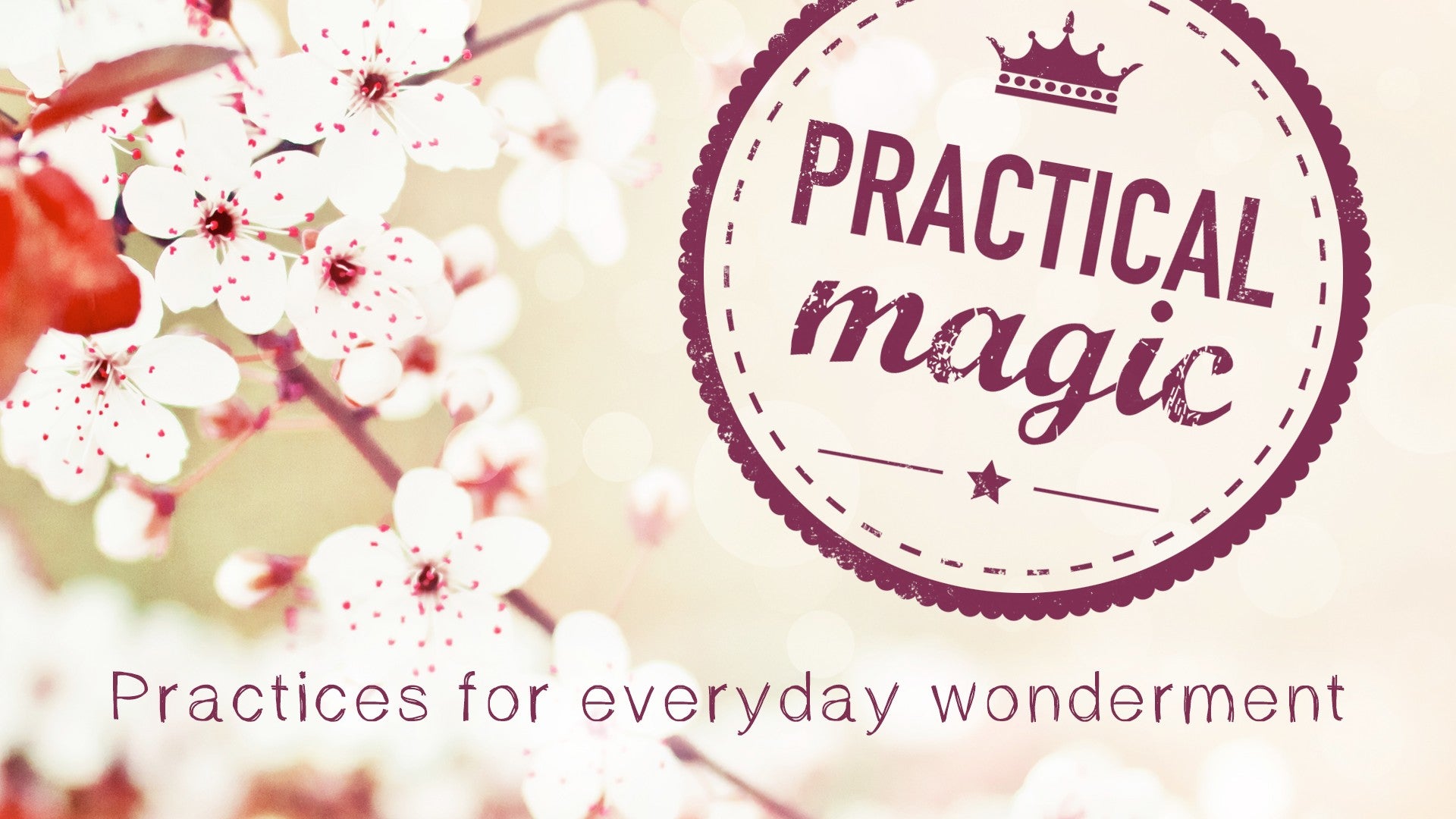
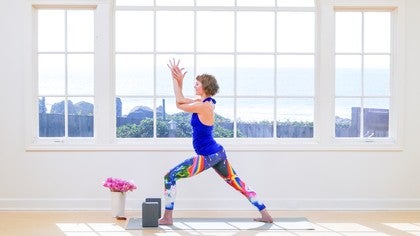
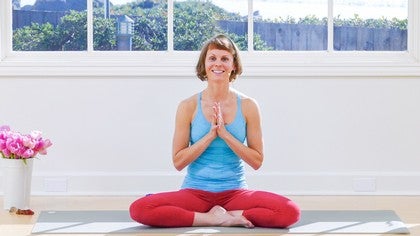
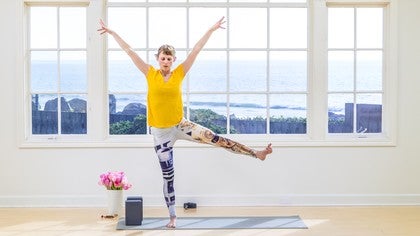




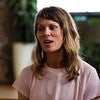
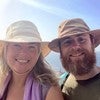
 this was a beautiful practice
this was a beautiful practice 
